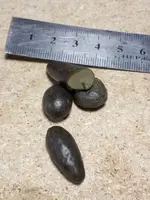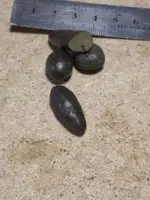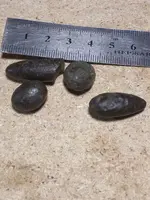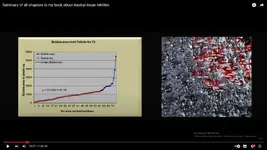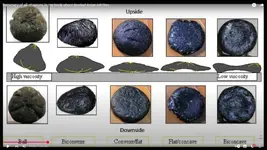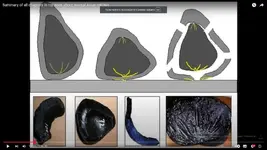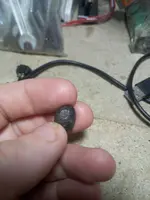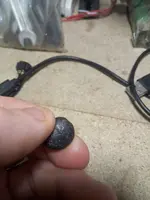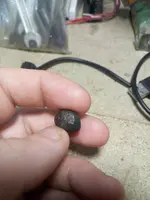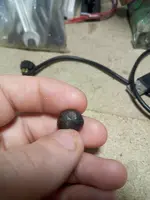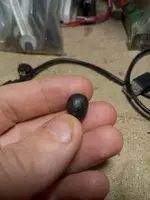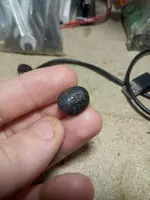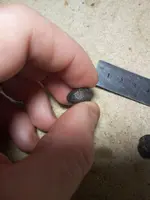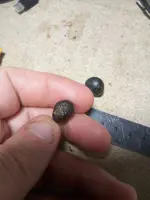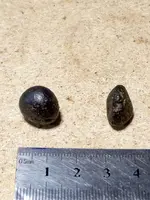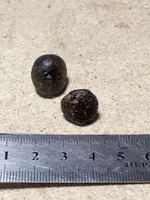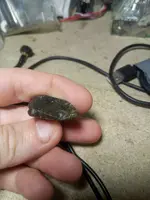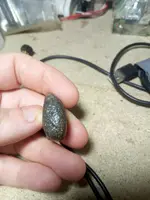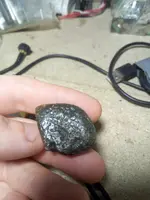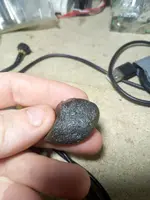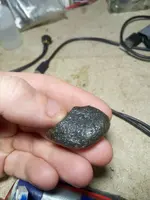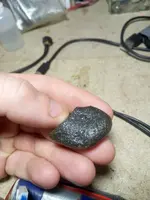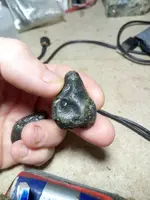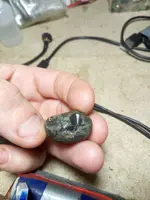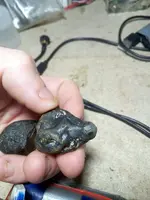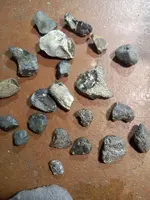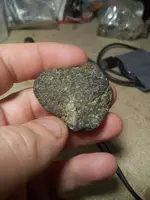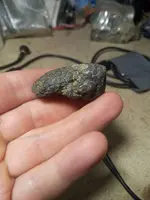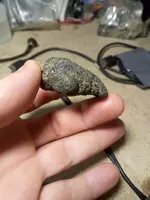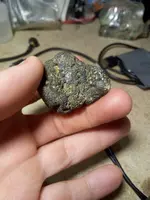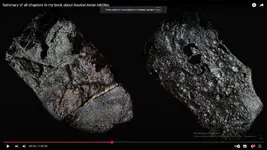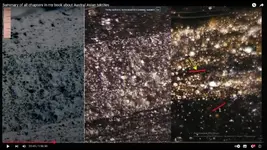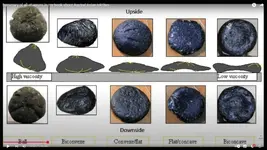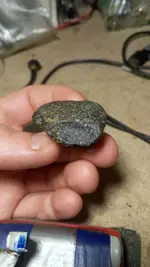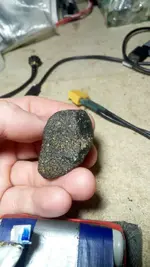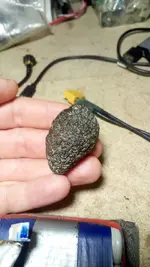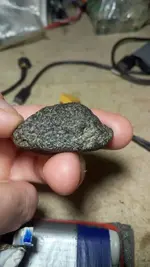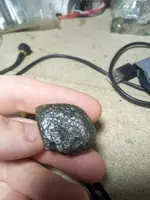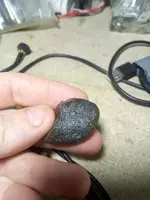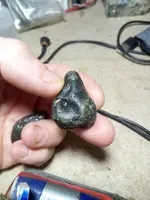hi. today I took several measurements.
my stone is OK, OK according to visual parameters,
according to weight 2.36-2.53... I took several measurements. once with a dry stone, once with an already wet one
weight of stone 2.48 dry and 2.6 wet g.:
1) weight of water without stone - 44.75 g
weight of water with stones - 45.73
volume of stone 0.98
2.48/0.98 = 2.53
2) weight of water without stone - 44.50 g
weight of water with stones - 45.6
volume of stone 1.1
2.6/1.1 = 2.36
The stone in the water did not touch the bottom, and was completely sunk under the surface of the water. The result was expected within a few seconds.
Oh dear! What a misleading video.
He says that his specimens were bought from a dealer in
Vietnam. That’s certainly within the strewnfield for Australasian tektites. There are only four known strewnfields for tektites:
[The distribution of tektite strewn fields (grey shading) and associated or probable source craters (black dot). Modified from Montanari and Koeberl (2000).]
Note that Ukraine is
not within any of those strewnfields. As I said in an earlier post, very occasional Moldavite examples have been found in western Ukraine, but they are distinctly green in colour and represent the furthest known locations from their source crater in southern Germany. Yours are clearly not Moldavites. There are also examples of items that appear from magnetic characterisation to be impact glass from western Siberia known as Urengoites, but they are
extremely rare. As far as I know there are only three such specimens, none of which were found in Ukraine. The source crater has not been identified.
He then says that the authenticity of (his) specimens can be checked by three characteristics:
Colour. Black but can appear greenish in thin sections.
So can obsidian (which can also be fully green in some locations, although not in Ukraine.)
Form. He mentions a number of different splash forms and also layered types.
Obsidian and related volcanic ejecta can also have most of these forms, with the possible exception of ‘dumbbells.’ Obsidian is typically not ballistically ejected and, when it is, usually at lower velocities than tektites. Teardrop shapes are consequently less common for obsidian ejecta and rotational shapes such as dumbbells would be unlikely. One key diagnostic which he does not mention, is that ablation of the anterior surface from high-velocity atmospheric re-entry is not seen on obsidian-related volcanic ejecta (and neither is spallation on the anterior surface due to rapid cooling in the cold upper atmosphere – at least not in an orderly or repeatable manner.)
Specific Gravity. He quotes a range from 2.4-2.5.
Obsidian has a Specific Gravity between 2.35-2.60 (as well as outside that range for obsidian-related specimens, depending on how vesicular they might be), so it can fall within the same range as tektites.
Obsidian-related ejecta with remarkable resemblance to tektites can be found all over the world in areas that have seen volcanic activity. In a number of areas these pseudo-tektites have been given geological names related to their locality such as Columbianite, Cali Glass, Agni Manitite, Saffordite, Cintamani stones, and various other names. Those names are also being borrowed for specimens from other localities where geologically similar specimens are found but which don’t have specific names. Notably similar specimens are found in the vicinity of the Carpathian Mountains running through Ukraine, Romania, Poland, Slovakia, Hungary, Czechia and Serbia but they aren’t tektites. They’re volcanic in origin.
I would refer you to my ‘fire engine’ post here:
I have an eyewitness to the fall of the meteor in 2005. Now trying to find the wreckage. These are two (total six) fragments found nearby. They were found approximately at a distance of a kilometer from my first find. Do these look like fragments of a meteorite? I would be grateful for any opinion.

www.treasurenet.com



